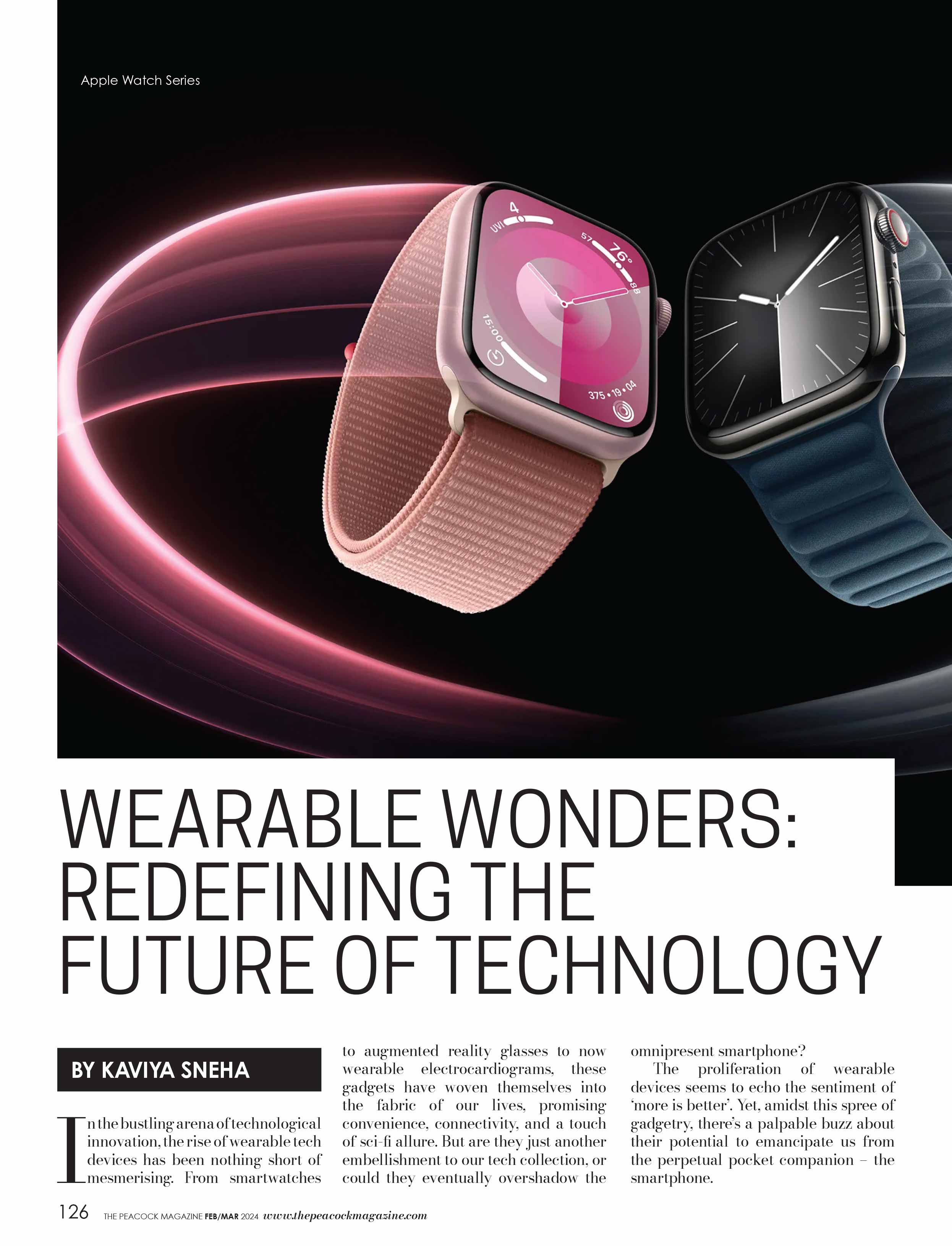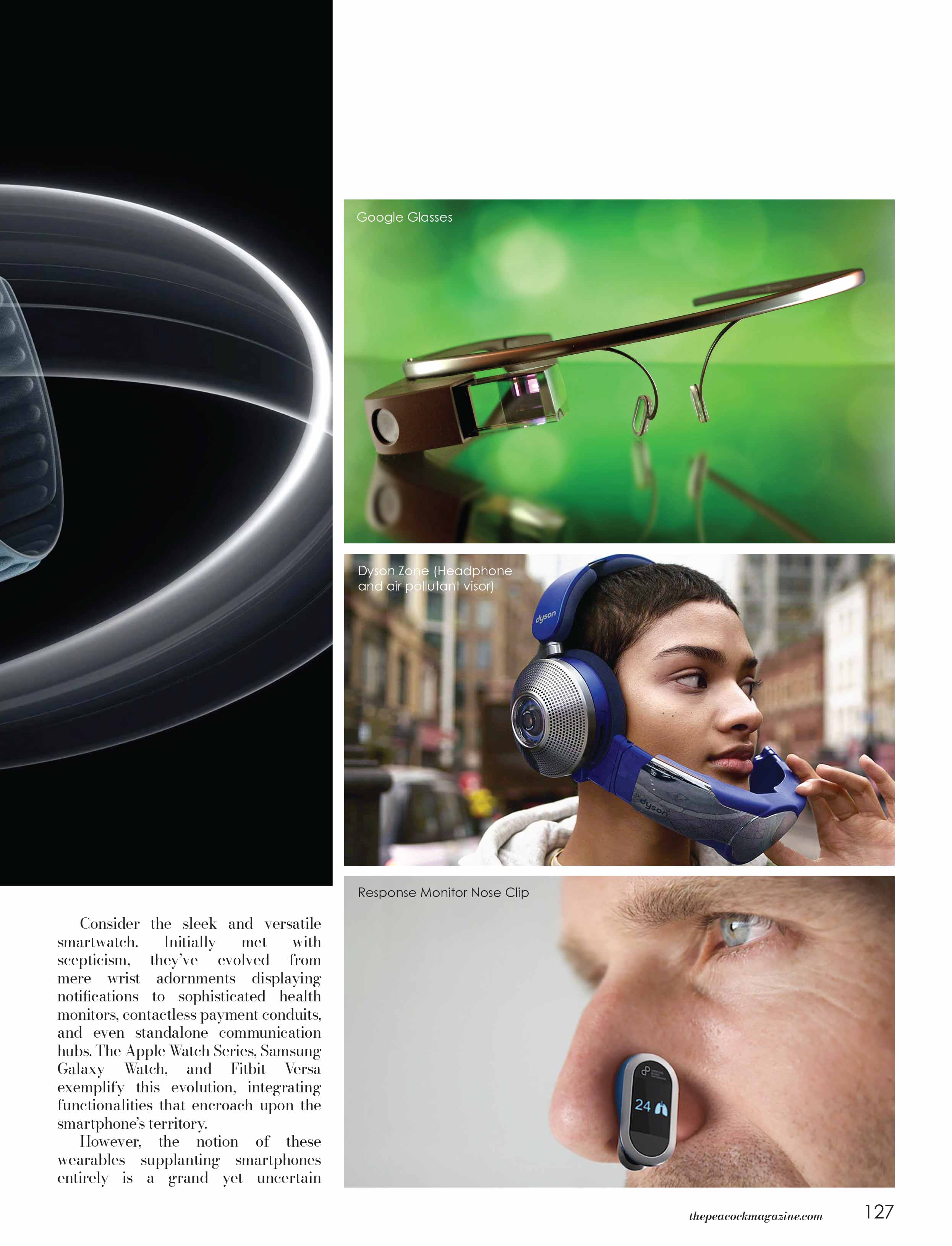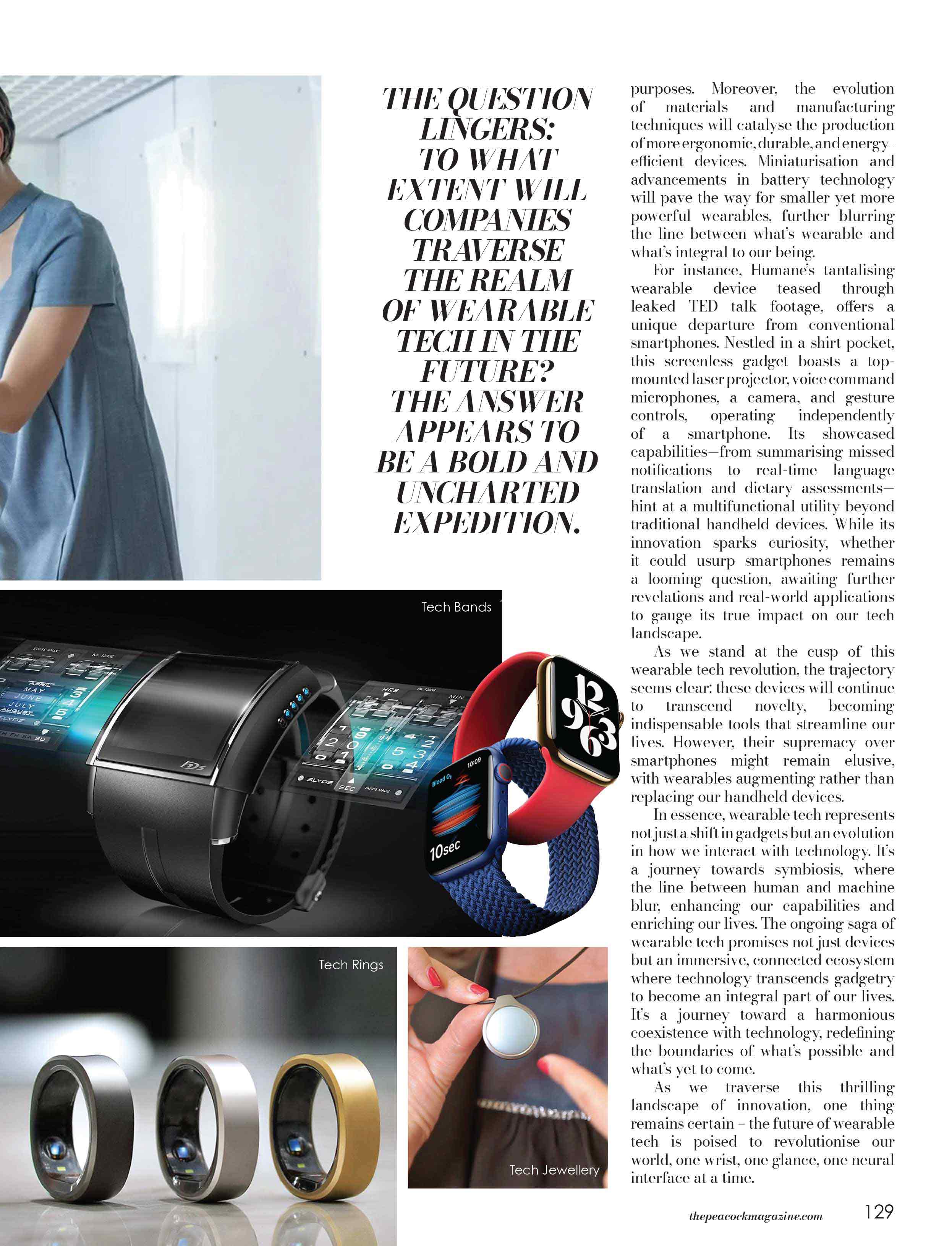
In the bustling arena of technological innovation, the rise of wearable tech devices has been nothing short of mesmerising. From smartwatches to augmented reality glasses to now wearable electrocardiograms, these gadgets have woven themselves into the fabric of our lives, promising convenience, connectivity, and a touch of sci-fi allure. But are they just another embellishment to our tech collection, or could they eventually overshadow the omnipresent smartphone?
The proliferation of wearable devices seems to echo the sentiment of ‘more is better’. Yet, amidst this spree of gadgetry, there’s a palpable buzz about their potential to emancipate us from the perpetual pocket companion – the smartphone.

Consider the sleek and versatile smartwatch. Initially met with scepticism, they’ve evolved from mere wrist adornments displaying notifications to sophisticated health monitors, contactless payment conduits, and even standalone communication hubs. The Apple Watch Series, Samsung Galaxy Watch, and Fitbit Versa exemplify this evolution, integrating functionalities that encroach upon the smartphone’s territory.
However, the notion of these wearables supplanting smartphones entirely is a grand yet uncertain prospect. While they excel in certain aspects, their miniature interfaces and limited capabilities still necessitate tethering to a smartphone for comprehensive functionality. It’s akin to a sidekick rather than a replacement!

The trajectory of wearable tech innovation continues to ascend, propelled by a convergence of disciplines. Health and wellness have emerged as pivotal domains, fuelling a wave of devices designed to monitor, analyse, and enhance our physical well-being. Advanced sensors, capable of monitoring vital signs with precision, are being integrated into smart clothing, wristbands, and even jewellery. These innovations aim not just to track but to proactively manage health, potentially revolutionising healthcare delivery.
Augmented reality (AR) glasses, another frontier of wearable tech, tantalise with the promise of an immersive, hands-free digital experience. Devices like Google Glass and Microsoft HoloLens have made strides in blending the digital and physical worlds. Yet, their adoption remains confined to niche industries and enthusiasts, hinting at their evolving potential rather than their current practicality.
The question lingers: to what extent will companies traverse the realm of wearable tech in the near future? The answer appears to be a bold and uncharted expedition. As technology marches forward, companies are likely to delve deeper into the augmentation of our reality, aiming to create seamless integration between humans and technology. Now this sounds more feasible with the advances in AI and chatbots.
The future of wearable tech envisions a landscape where these devices become extensions of ourselves rather than mere gadgets. Imagine attire embedded with sensors that monitor health, AR glasses seamlessly guiding our daily tasks, or even neural interfaces bridging the gap between mind and machine.
Manufacturers are poised to push the boundaries of innovation by marrying functionality with aesthetics. The convergence of fashion and technology will birth wearables that seamlessly blend into our lives, complementing personal style while serving practical purposes. Moreover, the evolution of materials and manufacturing techniques will catalyse the production of more ergonomic, durable, and energy-efficient devices. Miniaturisation and advancements in battery technology will pave the way for smaller yet more powerful wearables, further blurring the line between what’s wearable and what’s integral to our being.

For instance, Humane’s tantalising wearable device teased through leaked TED talk footage, offers a unique departure from conventional smartphones. Nestled in a shirt pocket, this screenless gadget boasts a top-mounted laser projector, voice command microphones, a camera, and gesture controls, operating independently of a smartphone. Its showcased capabilities—from summarising missed notifications to real-time language translation and dietary assessments—hint at a multifunctional utility beyond traditional handheld devices. While its innovation sparks curiosity, whether it could usurp smartphones remains a looming question, awaiting further revelations and real-world applications to gauge its true impact on our tech landscape.
As we stand at the cusp of this wearable tech revolution, the trajectory seems clear: these devices will continue to transcend novelty, becoming indispensable tools that streamline our lives. However, their supremacy over smartphones might remain elusive, with wearables augmenting rather than replacing our handheld devices.
In essence, wearable tech represents not just a shift in gadgets but an evolution in how we interact with technology. It’s a journey towards symbiosis, where the line between human and machine blur, enhancing our capabilities and enriching our lives. The ongoing saga of wearable tech promises not just devices but an immersive, connected ecosystem where technology transcends gadgetry to become an integral part of our lives. It’s a journey toward a harmonious coexistence with technology, redefining the boundaries of what’s possible and what’s yet to come.
As we traverse this thrilling landscape of innovation, one thing remains certain – the future of wearable tech is poised to revolutionise our world, one wrist, one glance, one neural interface at a time.
